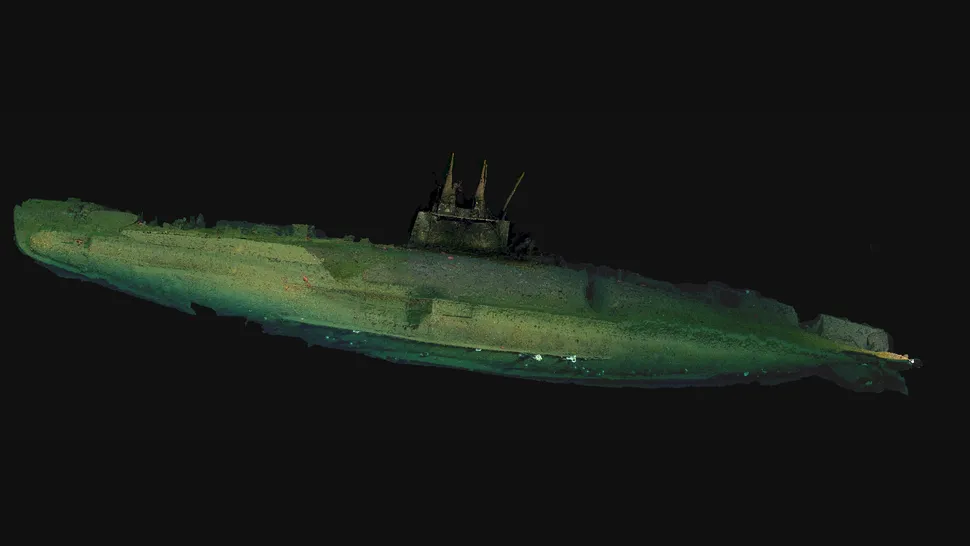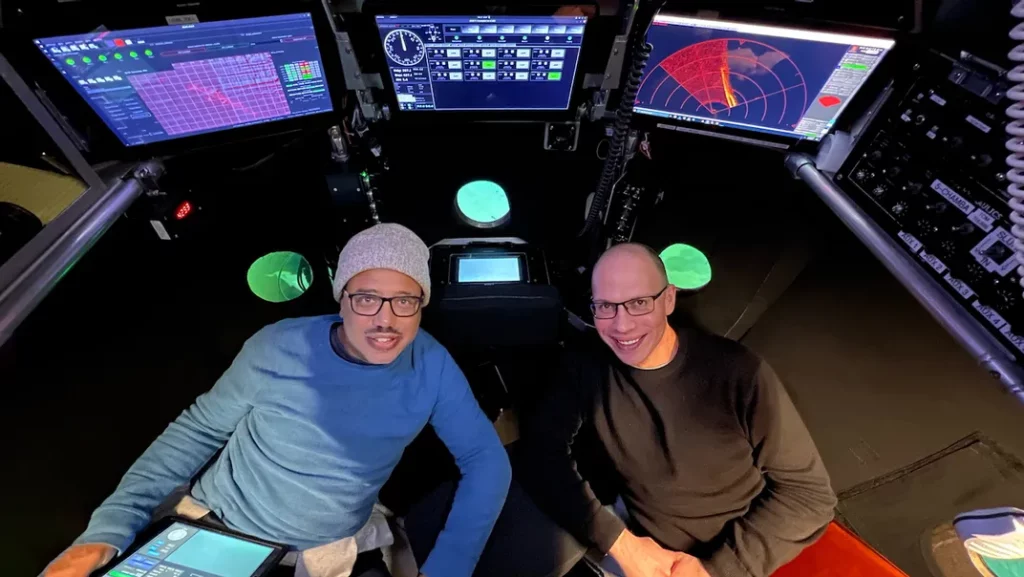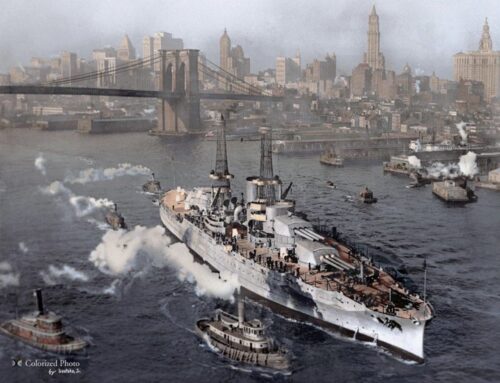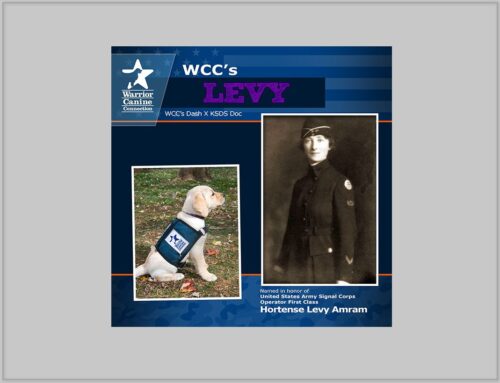A World War I US Navy Submarine Sank in 10 Seconds in 1917. Now The Wreck Has Been Revealed in Stunning Detail
Published: 2 June 2025
By Tudor Tarita
via the ZME Science website

WWI submarine.jpg
A photogrammetric reconstruction of the submarine USS F-1 on the seafloor west of San Diego. Credit: Zoe Daheron / Woods Hole Oceanographic Institution
Researchers unveil haunting 3D views of WWI sub that sank off San Diego in 1917
On a foggy December morning in 1917, three U.S. Navy submarines crept through the waters off the coast of San Diego. They were testing their limits—running performance trials in the shadow of World War I. Then came a collision. In less than ten seconds, the USS F-1 vanished beneath the waves.
Now, more than a century later, the lost submarine has resurfaced—virtually.
In a deep-sea mission carried out earlier this year, researchers from the Woods Hole Oceanographic Institution (WHOI), in collaboration with the U.S. Navy, returned to the wreck site. Using state-of-the-art imaging tools aboard two submersibles, they captured the most detailed views ever recorded of the F-1’s final resting place.
“It was a profound honor to visit the wreck of the F-1,” said Bruce Strickrott, senior pilot of Alvin, WHOI’s human-occupied submersible. “Advanced ocean technology and simple teamwork played a big part in delivering these new images.”
A WWI Submarine’s Sudden End
The USS F-1 was barely six years old when it sank. Built in 1909 and launched in 1911, the 43-meter (142-foot) submarine was part of America’s early undersea fleet—a war machine still in its infancy when the United States joined World War I in 1917.
On December 17 of that year, the F-1 was conducting a 48-hour “engineering run and performance test” off the coast of La Jolla, California. Two other submarines—USS F-2 and USS F-3—were running similar exercises nearby.
Then, as Bradley Krueger, a senior archaeologist with the Naval History and Heritage Command, explained to Live Science, “All three vessels entered a fog bank. USS F-3 collided with USS F-1, and following the collision USS F-3 remained on scene to help rescue survivors from the water.”
For decades, the wreck remained hidden. It was accidentally rediscovered in 1972, when a Navy underwater vehicle searching for a crashed jet stumbled across the sub’s remains. “It looked like a big ax had hit her,” the pilot said at the time.

Rob Sparrock, research vessels program officer at the Office of Naval Research (left), and Bradley Krueger, senior archaeologist at the Naval History and Heritage Command, inside Alvin. Credit: Bruce Strickrott / Woods Hole Oceanographic Institution
Earlier this year, from February 24 to March 4, a team of scientists and engineers finally returned for a closer look. Launched from the research vessel Atlantis, they sent down Alvin and an autonomous vehicle named Sentry to a depth of close to 400 meters (1,300 feet)—too deep for traditional scuba divers.
The mission was part of a scheduled training expedition funded by the National Science Foundation, the Office of Naval Research, and the University-National Oceanographic Laboratory System. But it offered far more than training.
Using sonar, still photography, and video, the team surveyed the wreck of the F-1, which still lies on its right side, bow pointed northwest. Despite spending 107 years underwater, it is “remarkably intact,” Strickrott said.
→ Read the entire article on the ZME Science website here:
External Web Site Notice: This page contains information directly presented from an external source. The terms and conditions of this page may not be the same as those of this website. Click here to read the full disclaimer notice for external web sites. Thank you.



